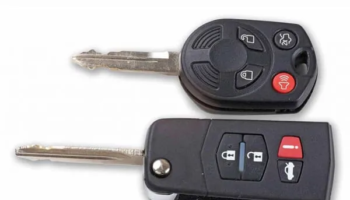Accidents can happen unexpectedly, and being equipped with the knowledge of effective emergency medical procedures can make all the difference in saving lives. Whether you find yourself at the scene of a car crash, workplace incident, or any other accident, understanding the steps to provide proper accident care is crucial. In this comprehensive guide, we will walk you through the essential procedures and techniques to administer immediate aid and ensure the best possible outcomes for those in need.
Introduction
When an accident occurs, every second counts. The immediate actions taken by bystanders or first responders can greatly impact the survival and recovery of the victims. By following a set of effective emergency medical procedures, you can provide critical care until professional medical help arrives. This guide aims to equip you with the necessary skills and knowledge to handle accident situations confidently.
Understanding the Basics of Accident Care
Accident care involves a range of procedures aimed at stabilizing the injured individual and minimizing further harm. Here are the fundamental steps to follow when providing accident care:
Assess the Situation and Ensure Safety
Before rushing to aid the injured person, it’s vital to evaluate the scene for any potential hazards. Check for dangers such as fire, electrical wires, or unstable structures. Ensure your own safety and that of others before proceeding.
Call for Emergency Assistance
Contact the appropriate emergency services, such as the local ambulance service or fire department, depending on the severity of the accident. Provide clear and concise information about the location and nature of the incident. Stay on the line to receive further instructions and updates.
Perform Basic First Aid
While waiting for professional help to arrive, administer basic first aid to the injured person. This may include:
- CPR (Cardiopulmonary Resuscitation): If the person is not breathing or their heart has stopped, begin CPR immediately. Follow the recommended compression-to-breath ratio and techniques.
- Control Bleeding: Apply direct pressure to wounds using sterile dressings or clean cloth to control bleeding. Elevate the injured area if possible.
- Immobilize Fractures: If you suspect a bone fracture, immobilize the affected area using splints or improvised materials to prevent further damage.
Comfort and Reassure the Injured
In addition to physical care, providing emotional support to the injured person is equally important. Offer words of reassurance, stay calm, and maintain a compassionate presence. This can help alleviate anxiety and promote a sense of security.
Professional Medical Help Arrives
Remember that accident care provided by bystanders or first responders is meant to bridge the gap until professional medical help arrives. Once the emergency medical services are on the scene, step aside and let the experts take over. Provide them with accurate information regarding the care already provided, as it will aid in their assessment and subsequent treatment decisions.
Conclusion
Being prepared to administer effective emergency medical procedures can make a significant impact on the outcome of an accident. By understanding the basics of accident care, assessing the situation for safety, calling for emergency assistance, performing basic first aid, and providing comfort to the injured, you can contribute to saving lives and minimizing further harm. Remember, the key to successful accident care lies in knowledge, quick response, and a calm and compassionate approach. Together, let’s strive to make a difference in accident situations and ensure the well-being of those in need.






